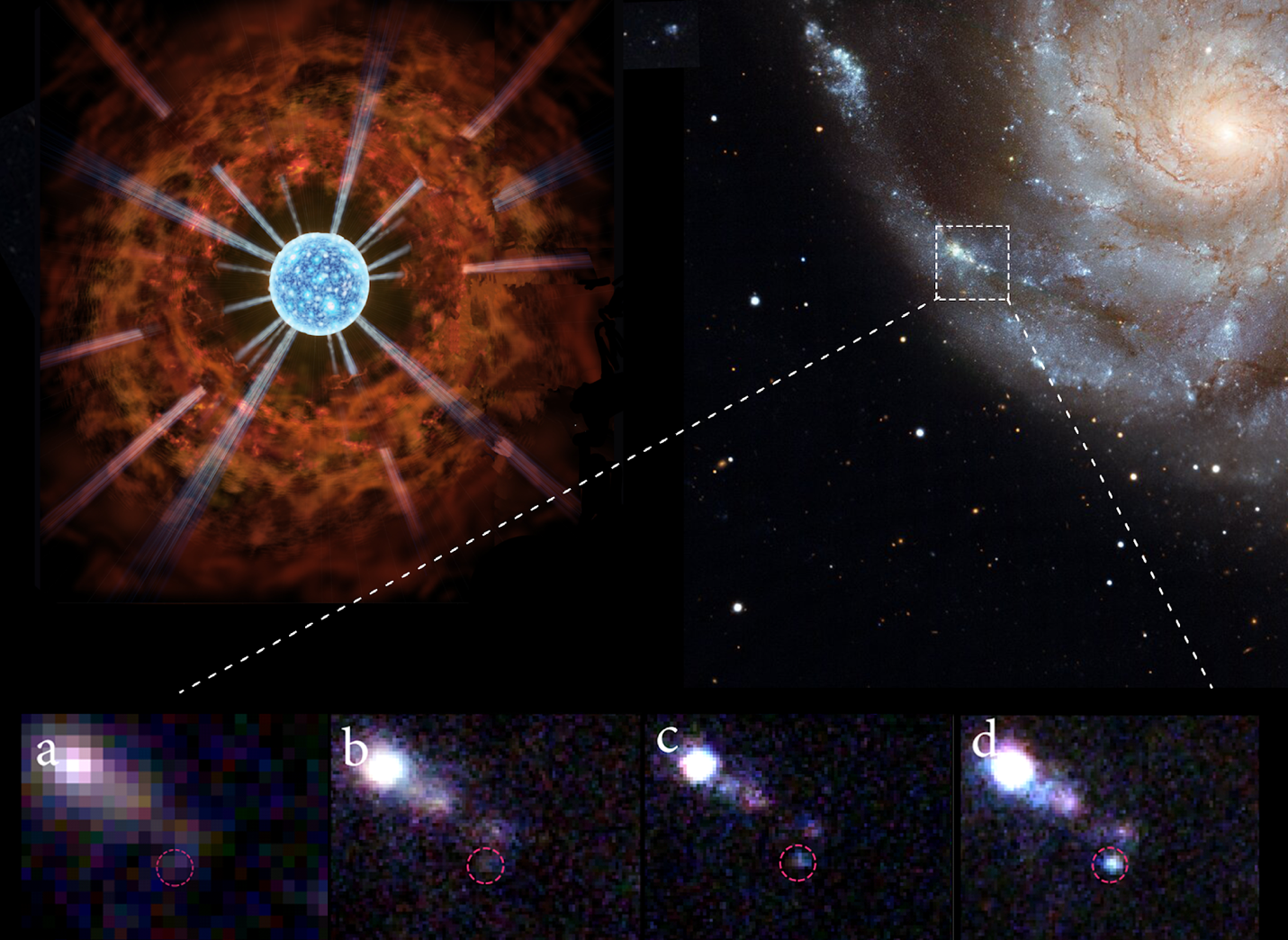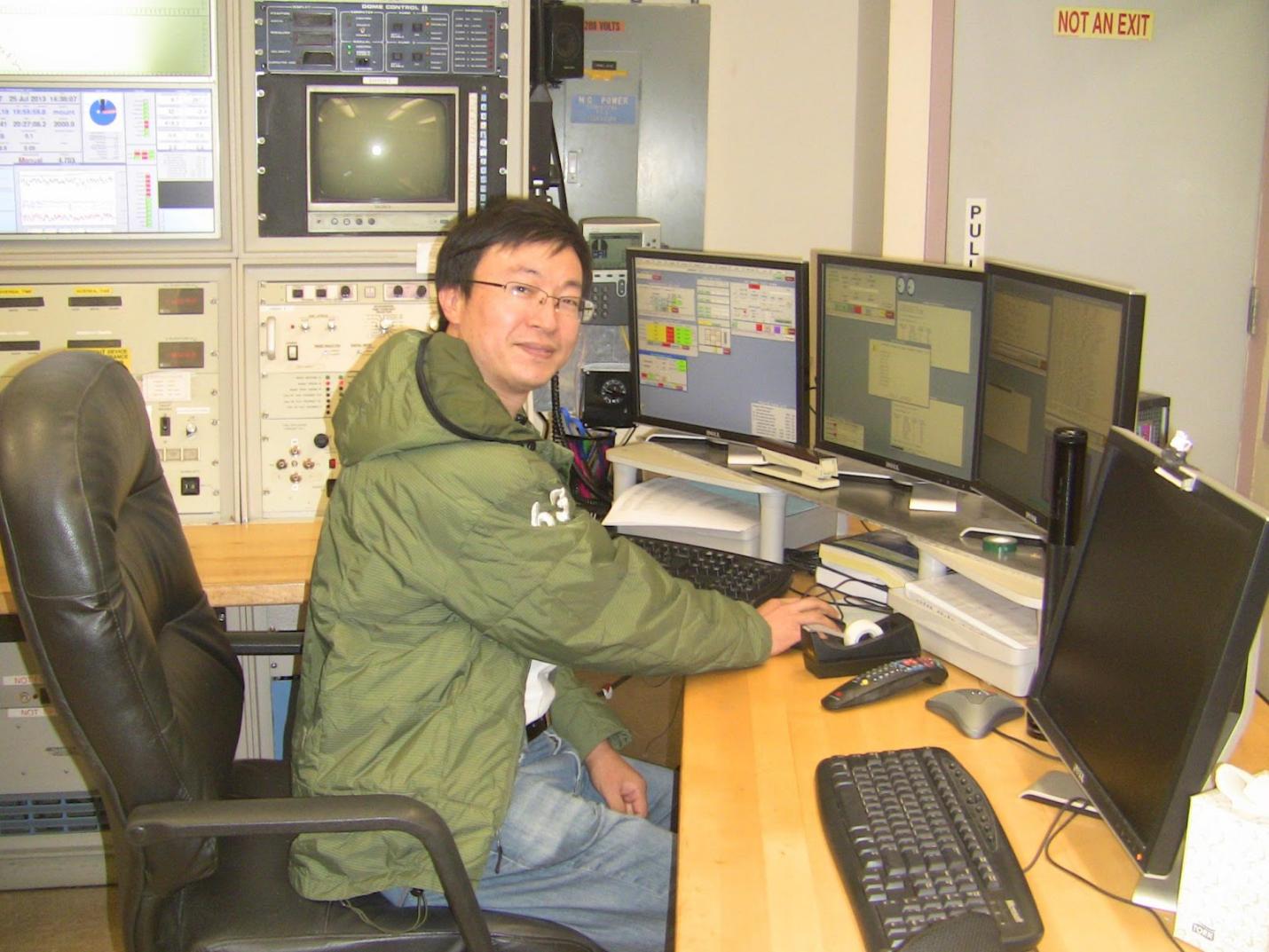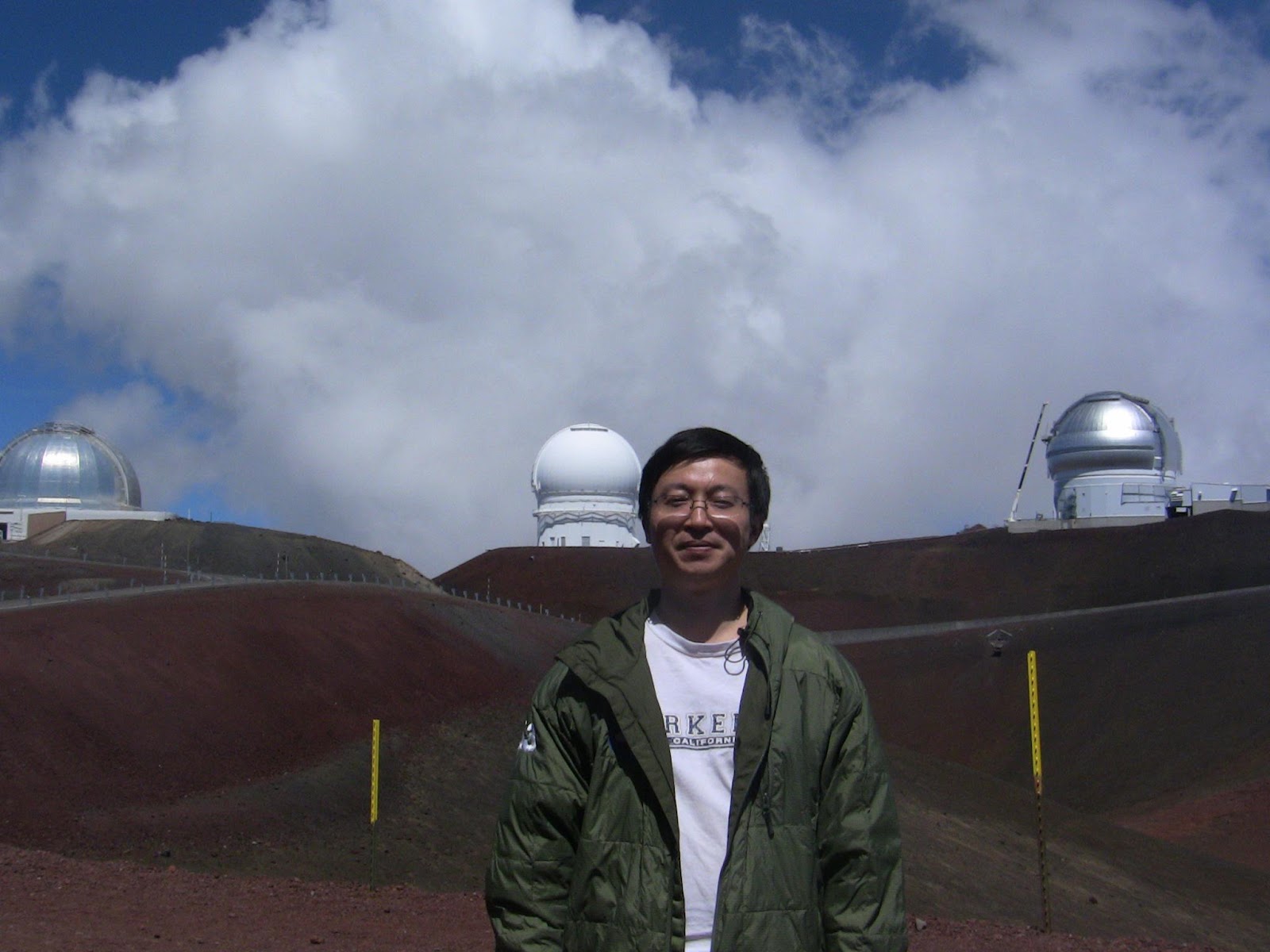Amateur observations have recorded the flash of a giant exploding star within an hour of its collapse.
In May 2023, researchers called on amateur astronomers around the world for early data they had collected on the explosion of a nearby red supergiant star.

Images a to d show the supernova explosion of SN 2023ixf turn from red to blue across the course of observations form 18 May 2023 (a-c) and early 19 May 2023 (d).
These amateur observations represent “the earliest electromagnetic signals ever observed for a core-collapse supernova”, says Xiaofeng Wang, an astrophysicist at Tsinghua University, who led the research.
The results, published in Nature1 at the end of 2023, show that the star had disgorged vast amounts of dust in the years before its death, creating a dense cloud that dimmed the first flash of light from the explosion.

Xiaofeng Wang at the W. M. Keck Observatory in Hawaii in the United States.
Amateurs capture star’s last moments
The supernova, known as SN 2023ixf, occurred when fusion reactions in the core of a red supergiant star, which are among the largest stars in the universe, were no longer able to support its mass. The team estimates that this star would have been more than 400 times the diameter of our Sun.
When its core collapsed, it produced a shockwave that created a furious burning that ripped through the star’s outer layers, accompanied by an intense flash of light. This light carried vital information about the nature of the red supergiant, as well as the material surrounding it.
SN 2023ixf is just 21 million light years away from Earth, making it one of the closest supernovae ever observed. It was first spotted on 19 May 2023 by amateur astronomer Kōichi Itagaki in Japan and grew brighter over the next few days before starting to fade from about 10 June. SN 2023ixf will, however, be able to be viewed by some large-aperture telescopes for a long time to come.
Its proximity meant that many amateur astronomers had unwittingly observed the supernova during its first few hours, giving the wider astronomical research community a treasure trove of data about the event.
“After getting notice of their serendipitous observations, we immediately contacted many amateurs and asked them for their raw images, for better processing,” says Wang. That processing included extracting the separate signals for blue, green and red light captured by some of the amateurs’ telescopes.

Five researchers from Tsinghua University’s Department of Physics were authors on a paper published in Nature on an unusual supernova (L to R): Shengyu Yan, a Ph.D. student; Gaici Li, a Ph.D. student; Xiaofeng Wang, a professor; Maokai Hu, a postdoctoral fellow; and Yi Yang an assistant professor.
Dusty red halo
The earliest of these observations can be traced back to about one hour after the supernova explosion, and they show that its light was much fainter and redder than predicted by theoretical models. The researchers think this is because the first flash of light shone through a thick cloud of dust that surrounded the red supergiant.
Roughly four hours later, the light from the supernova had settled into the expected color palette, suggesting that the explosion had finally destroyed the dust shell. This rapid change from red to the normal blue of a very hot shockwave, within the first few hours after the explosion “is unusual and has never been seen before”, says Wang.

Xiaofeng Wang and his collaborators have made observations of supernovae (including SN 2023ixf) at the W. M. Keck Observatory using the Keck 10-m telescope. The observatory is located at an elevation of 4,145 meters near the summit of Mauna Kea in Hawaii.
The researchers think that only within the 2-3 years prior to its supernova explosion, the star had been pouring out dust amounting to tens of thousands of times the mass of the Earth, creating a particle shell several billion kilometers wide.
The observations also show that the explosion was not a neat sphere, or the dust cloud may not have been spherical, with the latter scenario suggesting that the star may have discharged its material in a series of eruptions or pulses that created an uneven shape.
Wang says that his team is now making a more detailed study of the light emitted by SN 2023ixf. These observations could help to offer a more precise estimate of the mass of the progenitor star, and potentially reveal more details about the dust cloud that surrounded it, as well as the nuclear reactions that occurred during the explosion.
Reference
Li, G., Hu, M., Li, W., Yang, Y., Wang, X. et al A shock flash breaking out of a dusty red supergiant Nature (2023). doi: 10.1038/s41586-023-06843-6
Editor: Guo Lili